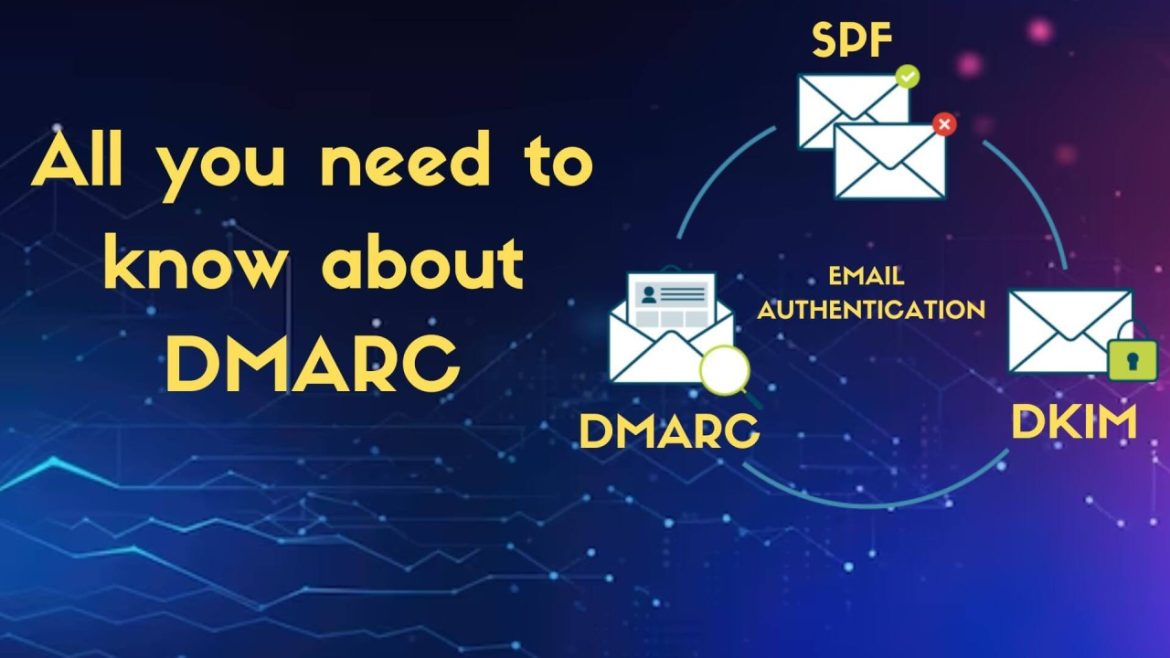In today’s digital age, email security is paramount. With cyber threats evolving constantly, businesses and individuals alike need robust measures to safeguard their email communications. One such essential tool in the arsenal of email security is the DMARC checker. In this comprehensive guide, we’ll delve into everything you need to know about DMARC checker, from its basics to advanced implementation strategies.
Understanding DMARC Checker
In the realm of email security, DMARC (Domain-based Message Authentication, Reporting, and Conformance) plays a pivotal role. At its core, a DMARC checker is a tool designed to authenticate emails sent from a specific domain. It works by enabling domain owners to publish policies instructing receiving mail servers on how to handle messages that fail authentication checks.
Implementing DMARC checker involves configuring DNS records to specify what actions should be taken with emails that fail authentication, such as quarantine or reject. This ensures that only legitimate emails from authorized senders reach the recipient’s inbox, mitigating the risk of phishing attacks and email fraud.
Why DMARC Checker Matters
Ensuring email authenticity and integrity is critical for both businesses and individuals. By deploying a DMARC checker, organizations can:
- Enhance Email Security: DMARC checker helps prevent unauthorized use of domains for malicious purposes, reducing the risk of phishing attacks and email spoofing.
- Protect Brand Reputation: By ensuring that only legitimate emails bearing their domain reach recipients, organizations safeguard their brand reputation and maintain trust with customers and stakeholders.
- Achieve Compliance: Many regulatory frameworks, such as GDPR (General Data Protection Regulation) and HIPAA (Health Insurance Portability and Accountability Act), require organizations to implement measures for securing email communications. DMARC checker assists in meeting these compliance requirements.
Implementing DMARC Checker: Best Practices
Deploying DMARC checker effectively involves following best practices to maximize its benefits:
- Gradual Policy Enforcement: Start with a “none” policy to monitor email traffic and gradually move towards a “quarantine” or “reject” policy once confidence in email authentication grows.
- Regular Monitoring and Reporting: Utilize DMARC reports to monitor email authentication status and identify potential issues or unauthorized email activity.
- Collaboration with Email Service Providers: Work closely with email service providers to ensure seamless integration of DMARC checker and timely resolution of any authentication issues.
Common Challenges with DMARC Checker
While DMARC checker offers robust email authentication capabilities, organizations may encounter some challenges during implementation:
- Complex Configuration: Configuring DMARC records and interpreting reports can be complex, requiring expertise in DNS management and email authentication protocols.
- Email Forwarding and Third-party Services: Email forwarding and third-party email services may interfere with DMARC authentication, requiring careful configuration to ensure compatibility.
- False Positives: Overly aggressive DMARC policies may inadvertently flag legitimate emails as fraudulent, leading to false positives and potential email delivery issues.
FAQs (Frequently Asked Questions)
Q: What is DMARC checker, and how does it work?
A: DMARC checker is a tool used to authenticate emails sent from a specific domain. It works by allowing domain owners to publish policies instructing receiving mail servers on how to handle messages that fail authentication checks.
Q: Why is DMARC checker important for email security?
A: DMARC checker helps prevent unauthorized use of domains for malicious purposes, such as phishing attacks and email spoofing, thereby enhancing email security and protecting brand reputation.
Q: What are some best practices for implementing DMARC checker?
A: Best practices for implementing DMARC checker include gradual policy enforcement, regular monitoring and reporting, and collaboration with email service providers to ensure seamless integration.
Q: What are the common challenges associated with DMARC checker?
A: Common challenges with DMARC checker include complex configuration, compatibility issues with email forwarding and third-party services, and the risk of false positives leading to email delivery issues.
Q: How can organizations overcome challenges in DMARC implementation?
A: Organizations can overcome challenges in DMARC implementation by seeking expertise in DNS management and email authentication protocols, configuring email forwarding and third-party services carefully, and fine-tuning DMARC policies to minimize false positives.
Q: What role does DMARC checker play in regulatory compliance?
A: DMARC checker assists organizations in achieving regulatory compliance by ensuring secure email communications, which is essential for frameworks such as GDPR and HIPAA.
Conclusion
In conclusion, DMARC checker stands as a cornerstone in the realm of email security, offering robust authentication capabilities to safeguard against phishing attacks and email fraud. By understanding its fundamentals, best practices, and common challenges, organizations can harness the power of DMARC checker to enhance email security, protect brand reputation, and achieve regulatory compliance.

